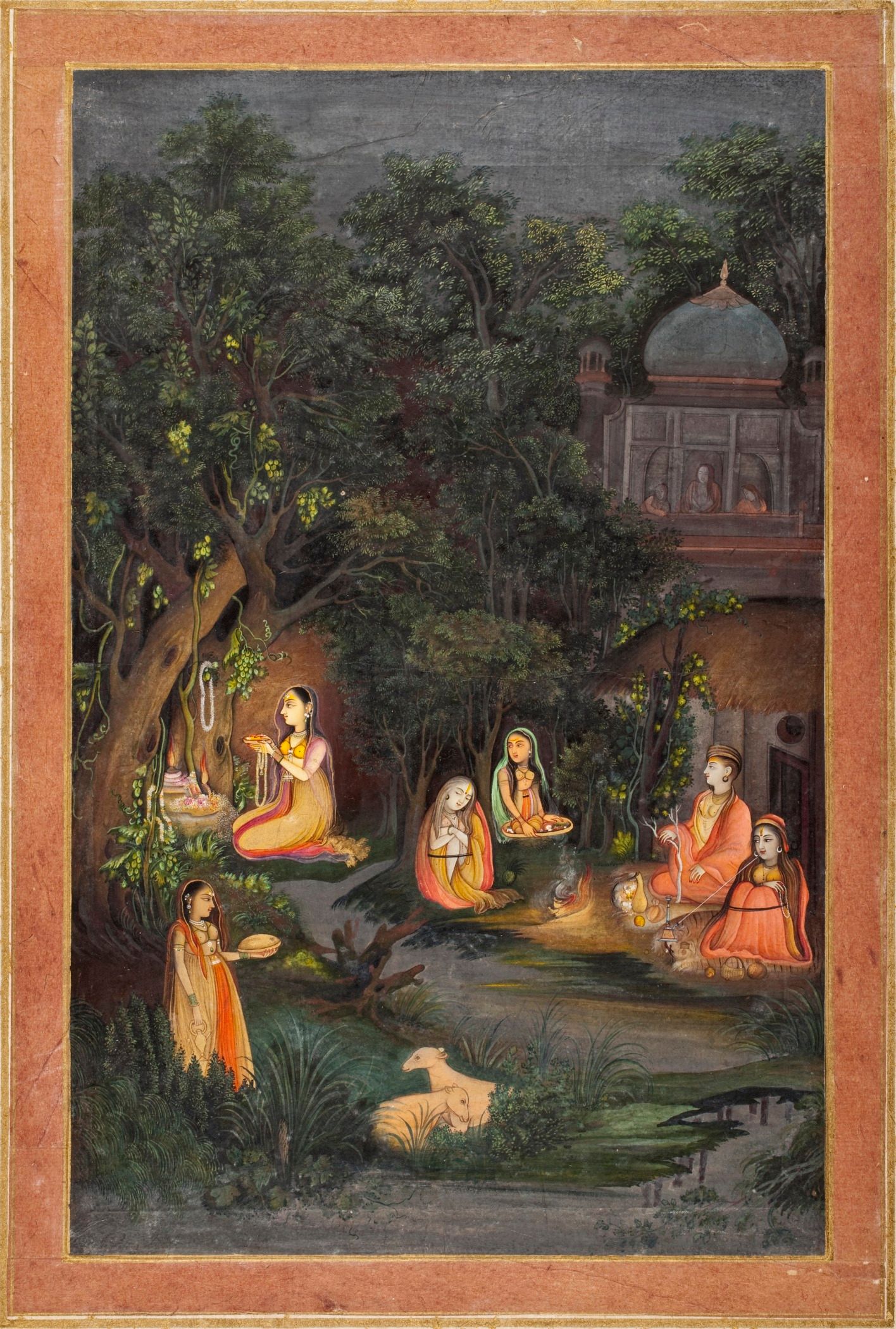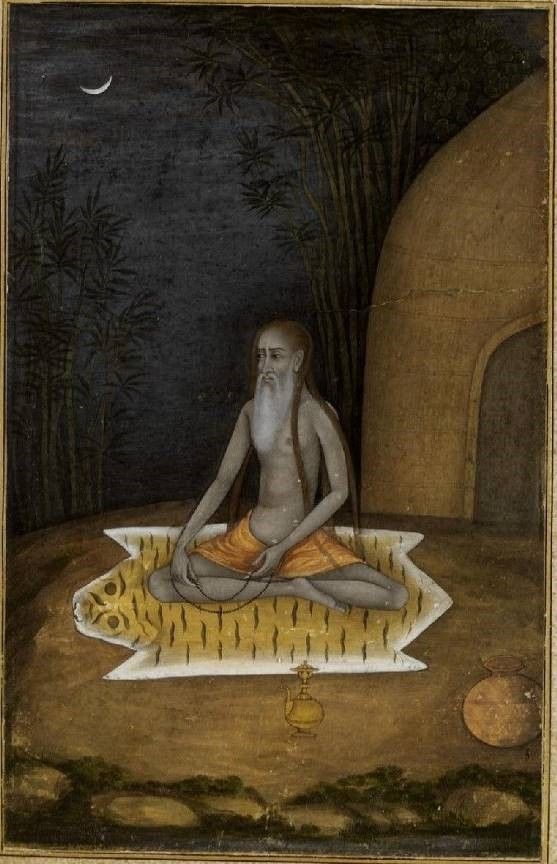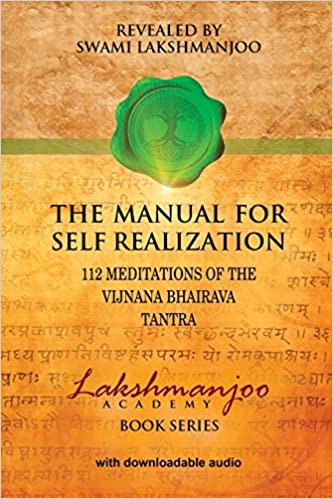meditation 2 : verse 25

The energy of breath
flows in

and
out . . .
Be aware
of the interval

outside . . .
and
inside . . .
Divine manifests.
▼▼⛛▼⛛▼▼
Swami Lakshmanjoo and Pandit Dina Nath Muju's original of Verse 25 reads as follows:
The energy of breath flows in and out. Be aware of the interval outside and inside. Divine manifests.
Ψ
▼▼⛛▼⛛▼▼
Notes:
This technique is significantly more refined than that of Meditation 1.
In the Manual for Self Realization, Swami Lakshmanjoo prefers the word void to the word interval, which is used here.
He emphasizes maintaining awareness in the two voids between breaths and further notes that this dhāraṇā (way, means, technique), requiring awareness only (rather than mantra and breath as objects), is śāktopāya.
This system postulates three ways of realizing the Shiva State—the Ultimate Reality. Swamiji assigns some practices of the scripture, to those in the Āṇavopāya (Anav-upaya; for-beginners) stage of spiritual development.

• Anav-upaya is the method suitable for a limited being. It is meant for those who cannot yet rise above the interests of their limited selves and for whom the concrete and tangible is still more important than the abstract and intangible. So, in this method are included proper postures (asana), breathing exercises (pranayama), and repetition of sacred words (mantra). An aspirant on this path is usually required to concentrate on some symbol, such as triangle, Swastika, cross, or so on, or on some image, maybe of one's preceptor (guru), or of some deity, while repeating the sacred word given to one by one's preceptor. At a later stage, the preceptor may teach one to concentrate on the psychic centers in one’s body. If properly done, this can lead to the awakening of psychic faculties and even more, depending on one’s earnestness, purity of conduct, and the extent one can go beyond one’s limited self. This method is also called the method of action (Kriya-upaya).

• The next method, higher than the first, is called Śāktopāya (Shakta-upaya), or the method of Energy. Here, the external symbols and aids are dispensed with. No special posture or breathing exercise is considered necessary. Mantra is retained, but its verbal repetition is replaced by deep contemplation at a non-verbal level. The aspirant is required to contemplate so earnestly and with such awareness that the aspirant becomes one with the spirit of the Mantra and is permeated by its energy—for a Mantra is not merely a rhythmical arrangement of words, but a form of energy. Thus consciousness expands beyond the limited self. The greatest mantra is Hamsa (I am That). By contemplating the different facets of this mantra, the aspirant is led to negate the individual “I” and merge it into the universal “I.” This method is also called the method of wisdom (Jnyan-upaya) and is practiced long, even by the most advanced aspirants. It is considered quite capable of leading one to the next, which ushers in the highest Reality.

• The third and highest method is called Śāmbhavopāya (Shambhav-upaya), or the method of Shiva. At the first stage, bodily organs are involved in the various practices prescribed therein. At the second, bodily organs have no important role to play, as such, but the function of the mind at deep contemplative levels remains and has a very important role to play. Now, however, in the last state, even the mind has to be dispensed with. No rules can be laid down here, and no practices prescribed. Here the aspirant’s only concern is to be in that state of awareness where the movement of thought comes to a stop. The only qualification is earnestness combined with deep, penetrative insight. Hence, this method is also called the method of will (Ichhopaya). With the cessation of thought processes, the state beyond mind dawns. To let it happen, suppression or sublimation of thinking is not the way, but rather an intense awareness of each thought and feeling, at all times (including during sleep) is needed. In this intensity of choiceless attention, the ending [or fading away] of any thought, feeling, or perception can result in the dawning of Enlightenment. When the cup is empty, something new can fill it.
Any method, however subtle, can be only a result of a thought process—a product of mind. Hence it cannot touch that which is beyond thought, beyond mind. The mind can penetrate, at best, up to its own frontiers. Do what it will, it cannot go beyond its limits of time and space. Methods, one and all, are not only useless at this stage but rather obstacles. A method implies duality—a seeker and an object of search, a devotee and an object of devotion. The ever-present, all-pervading, all-knowing Totality needs not to be beseeched or coaxed. It arrives unsought, like a fresh breeze from the mountaintop, when the mind is free from thought and seeking.
When an aspirant comes to the clear realization of this fact, the Shambhav-upaya becomes An-upaya (No-Method) or what may be translated as Beyond-Method. In this state of non-dependence and effortless awareness, there is neither acceptance nor rejection, neither justification for nor identification with any feeling or thought. In this void, the worshipper is the worshipped. This state is not beyond action and wisdom only, but beyond will, too. It simply is.
II
Such is the path, yet there are hints available here and there, given out of compassion by those who have scaled the great heights, to help and encourage an earnest disciple to set his or her foot on the path. Shaiva Tantras are replete with such hints, though their esoteric meaning often remains obscure to those uninitiated in their mysteries. One of these, the Vijnyan Bhairava Tantra, is more explicit and expounds 112 unique ways of transcending the limitations of individuality. These ways are really meant for advanced seekers, who have reached that state of self-discipline where the need for laying down any formal discipline ceases. For such earnest aspirants, some situations likely to be met with in the ordinary course of life, and some practices—for performing which one need not withdraw from ordinary activities of life necessary for physical and social well-being—are delineated. Shaivism does not advocate external renunciation and running away from the world—for the cosmos is in Shiva and Shiva is in the cosmos. There is no situation where Shiva is not.
We cognize the external world by five senses—hearing, touch, sight, taste, and smell—which help us to gather knowledge, but which also, often, lead our minds astray. It is for this reason that usually all spiritual disciplines prescribe ways and means to curb and withdraw the senses from the world of manifestation. Shaivism here takes a radically different stand. It attempts to make these very senses and their pleasures stepping stones for the upward path: tasting, smelling, seeing, touching, and hearing. It elevates the pleasures of the senses from the plane of sensuality to that of increasingly refined sensitivity.
This approach appears, no doubt, alluring, but the neophyte must be forewarned. It is perilous too. An undisciplined, unwary, or over-zealous beginner may easily stumble on the very first step and break his limbs. A very cautious approach is needed. A seriousness of purpose to realize the Truth and a whole-hearted devotion to it alone, form the prelude to this search. Plainly speaking, it is not meant for those who are still held by the desire for gross pleasures.
Importantly, Jaideva Singh notes that when awareness remains in the "pause" [void] between breaths, spontaneously an upsurge in the central channel occurs.
In this manner, the central channel presents itself in its own time and of its own accord, according to the state of the yogi(ni).
To enable his commentary on this scripture to endure down through the ages, Swami Lakshmanjoo left it in two forms:
(i) a series of videos gracing each verse, which over a few years, John Hughes of the Lakshmanjoo Academy recorded, and
(ii) Swami Lakshmanjoo's textual embodiment of the tapes, The Manual for Self-Realization: 112 Meditations of the Vijñāna Bhairava Tantra (edited by John Hughes).
Both are treasures! In each, Swamiji comments on the scripture while responding to questions from his students. Swamiji emphasizes that the video version transmits his teaching with a higher level of fidelity.

Lakshmanjoo's Self Realization in Kashmir Shaivism: The Oral Teachings of Swami Lakshmanjoo (John Hughes, ed.) is also insightful.

For Jaideva Singh's comments, please refer to The Yoga of Delight, Wonder, and Astonishment.
